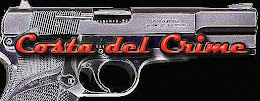fund of funds, UBP is the best-known private bank to get hit, with $700 million of its clients’ money invested with Mr. Madoff.
UBP is the best-known private bank to get hit, with $700 million of its clients’ money invested with Mr. Madoff. Founded in 1969 by Edgar de Picciotto, UBP quickly became a giant in the conservative world of Swiss banking, where partnerships like Pictet and Lombard Odier stretch back more than 200 years. With assets of $125 billion and a client base of wealthy individuals, families and institutions that reach from Qatar to Uruguay to Russia and throughout Europe, it is one of Switzerland’s biggest pipelines for channeling client money into hedge funds worldwide. About six years ago, that business, known as a fund of funds, began to rake in larger fees when it decided to set up a vehicle called M-Invest Ltd to funnel cash to Mr. Madoff’s firm. Through this relationship, UBP claimed it was able to gain close insight into Mr. Madoff’s investment operations, through copies of trade tickets and an unusual degree of access granted by Mr. Madoff himself to UBP’s representatives, according to a confidential internal letter sent to investors on Dec. 17, obtained by The New York Times.
The memorandum, while seeking to reassure investors, could raise questions about why UBP, unlike others who claimed to have seen red flags, did not use its access to delve more deeply into the unusually consistent annual returns that Mr. Madoff’s funds were reporting.
According to the memo, “We have met with Bernard Madoff and various principals several times at Madoff’s office, twice within the last year, and have had numerous conversations in between.” The letter stated that several of UBP’s senior investment professionals met with Mr. Madoff in 2004 and 2007, and that UBP’s structured risk analysis unit “had a full review in 2006 and recently in 2008 with Madoff himself.”
The UBP letter acknowledges some concerns over how Mr. Madoff’s firm combined investment management and brokerage services. But the Geneva bank said it “found comfort” in the fact that the firm was subject to “routine” audits by the Securities and Exchange Commission and Finra, another securities regulator, as well as “Madoff’s longstanding reputation in building Wall Street’s markets infrastructure.” M-Invest was regulated by the Cayman Islands Monetary Authority, where it was incorporated.UBP was also closely tied to Fairfield Greenwich Group, the New York investment company that was the single biggest gatherer of money for Mr. Madoff, sending $7.3 billion his way and collecting more than $500 million in fees as a result.Michael de Picciotto, a nephew of the founder and a top executive of UBP, is a close friend of Andrés Piedrahita, a son-in-law of Walter Noel, the founder of Fairfield Greenwich. Mr. Piedrahita played a key role in raising much of the money from Europe and South America that ended up with Mr. Madoff. UBP was the also main investment adviser, custodian and leverage provider to Fairfield’s huge fund of funds business and Mr. de Picciotto in turn was a key adviser to Fairfield, according to an internal document prepared by Fairfield last year for a potential buyer of the firm. In addition, UBP is listed as the sixth-largest investor in Fairfield’s funds, for which the bank provided “qualitative and quantitative research and operational due diligence,” according to the letter. At one point, the letter boasted that Mr. de Picciotto could provide insight into UBP’s investment and asset allocation strategy. Through these connections, UBP became entwined with Mr. Madoff’s investments even as competitors like Société Générale, which turned up a series of red flags during routine due diligence in 2003 at Mr. Madoff’s New York headquarters, steered clear.
“Ultimately, these people were blind to what was going on,” said Michel Dominicé, a veteran Geneva hedge fund manager with $200 million under management.







